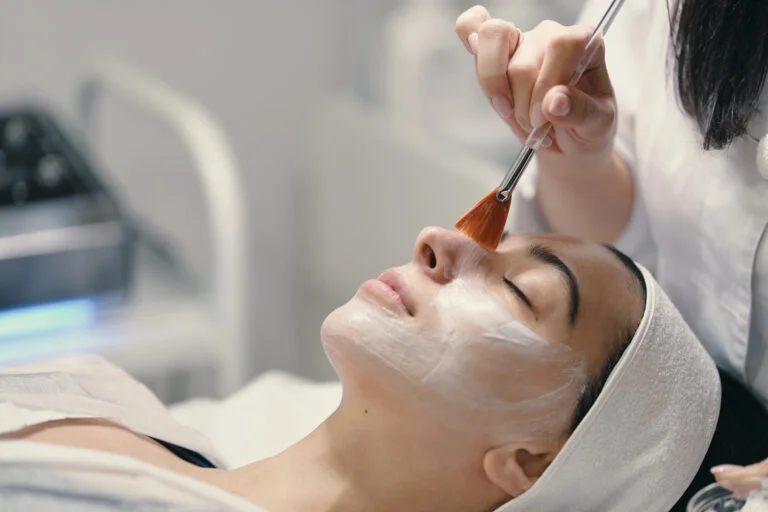Itching – technically known as pruritus – is a universal experience. We’ve all felt the sudden urge to scratch, whether it’s from a mosquito bite or dry winter skin. But for millions of people, itchy skin is more than a fleeting nuisance – it’s a chronic condition that severely affects quality of life.
Chronic itch can lead to sleepless nights, impaired concentration, anxiety, and even depression. In dermatology, it’s both one of the most common symptoms and one of the most challenging to treat. But the field is evolving rapidly, and exciting new itchy skin pruritus treatments are emerging that go beyond basic creams and antihistamines.
In this post, we’ll break down what causes itch, why it’s so hard to treat, and what novel itchy skin pruritus treatment therapies are on the horizon for patients suffering from chronic pruritus.
What Is Itch, Really?
Itch is a complex sensation triggered by stimulation of specific nerve endings in the skin, called pruriceptors. These nerve endings send signals through the spinal cord to the brain, which interprets them as an itch.
Acute itching is typically protective – it warns us of irritants or parasites. But chronic itch, defined as lasting more than six weeks, often serves no beneficial purpose and may be linked to skin diseases, systemic conditions, nerve damage, or even psychological disorders.
Common Causes of Chronic Itch
Understanding the underlying cause is the first step toward relief. Some of the most common reasons for persistent itching include:
- Dermatologic conditions – Atopic dermatitis, psoriasis, contact dermatitis, and lichen planus often present with intense itch.
- Systemic diseases – Liver disease (e.g., cholestasis), kidney failure (uremic pruritus), thyroid disorders, iron deficiency, and certain cancers (especially Hodgkin’s lymphoma) can all cause generalized itch.
- Neuropathic itch – Conditions like postherpetic neuralgia, multiple sclerosis, or brachioradial pruritus result from nerve damage or dysfunction.
- Psychogenic pruritus – Anxiety, obsessive-compulsive disorder, and depression can contribute to itch, often in the absence of a physical itchy skin issue.
- Medications – Opioids, statins, and ACE inhibitors, among others, are known to induce pruritus as a side effect.
The challenge? Itch is often multifactorial, and traditional treatments don’t always address its root causes.
Traditional Treatments and Their Limits
Historically, itchy skin treatment have focused on symptomatic relief:
- Topical corticosteroids to reduce inflammation
- Antihistamines to control allergic responses
- Moisturizers to restore itchy skin barrier function
- Coal tar and menthol for their soothing, cooling effects
While these options are effective for some, they’re often inadequate for chronic, systemic, or neuropathic itch. In many cases, itch persists despite aggressive topical or systemic skin pruritus treatment. That’s where newer therapies come into play.
Novel Treatments: What’s Changing the Game?
Over the past few years, scientific breakthroughs have shed light on the complex neuroimmune pathways involved in itch, leading to innovative new pruritus remedies that target the root causes.
1. JAK Inhibitors
One of the most promising advances in dermatology has been the use of Janus kinase (JAK) inhibitors. These drugs block specific enzymes involved in the inflammatory cascade that triggers itching in many skin conditions.
- Ruxolitinib cream (approved for atopic dermatitis and vitiligo) offers targeted relief with fewer systemic side effects.
- Abrocitinib and upadacitinib are oral JAK inhibitors effective in moderate-to-severe atopic dermatitis with rapid itch reduction.
- JAK inhibitors are also being studied in prurigo nodularis, psoriasis, and other chronic pruritic conditions.
2. Biologics
Biologic therapies have revolutionized the itchy skin treatment landscape. These drugs are designed to target specific immune pathways implicated in inflammation and itch.
- Dupilumab, a monoclonal antibody targeting IL-4 and IL-13, has shown dramatic itch relief in patients with atopic dermatitis and prurigo nodularis.
- Nemolizumab, which targets the IL-31 receptor – a key itch mediator – is another emerging option showing promise for several pruritic conditions.
- Ongoing trials are investigating other biologics for uremic pruritus and cholestatic pruritus.
3. Opioid Receptor Modulators
Our skin contains opioid receptors that modulate itch. Imbalances in this system can amplify the sensation.
- Nalfurafine, a kappa-opioid receptor agonist, is approved in Japan for uremic pruritus.
- Difelikefalin, another kappa-opioid agonist, recently received FDA approval for dialysis-related itch and shows significant potential with minimal central nervous system side effects.
4. Neuroactive Agents
Some treatments originally developed for nerve pain or mood disorders are being repurposed to treat chronic itching, especially of neuropathic or psychogenic origin.
- Gabapentin and pregabalin, commonly used for nerve pain, can reduce itch in conditions like brachioradial pruritus and notalgia paresthetica.
- SSRIs and SNRIs, such as paroxetine and sertraline, have shown benefits in psychogenic pruritus and certain systemic conditions.
- Aprepitant, a neurokinin-1 (NK1) receptor antagonist, blocks substance P – a molecule involved in both pain and itch transmission – and is currently under investigation for widespread use.
5. Phototherapy
UV light, particularly narrowband UVB, has long been used to treat psoriasis and eczema. It also reduces nerve signaling and cytokine expression involved in itching.
Phototherapy is especially helpful in cases of generalized pruritus, such as in elderly patients or those with systemic diseases.
Emerging Therapies on the Horizon
- TRPV1 antagonists, which target a specific receptor on nerve cells involved in itch and pain, are under investigation for topical use.
- Cannabinoid receptor modulators are being explored for their anti-inflammatory and anti-itch properties.
- Gene and microbiome therapies may one day allow us to prevent or reverse the immune dysregulation that leads to itchy skin at a cellular level.
Personalized Itchy Skin Treatment: The New Gold Standard
Because itch can stem from such a wide array of causes, a one-size-fits-all approach doesn’t work. The future of itchy skin treatment is personalized care that considers:
- Underlying systemic disease
- Type and duration of itch
- Psychological comorbidities
- Patient age and medication tolerance
At Trillium Clinic, we emphasize thorough diagnostic workups – including lab tests, skin biopsies, and sometimes nerve studies – to identify the root cause of itch and develop personalized skin pruritus treatment treatment plans that combine medical, behavioral, and lifestyle strategies.
Final Thoughts: Scratching the Surface of a Complex Problem
Chronic itch may not seem as serious as other medical issues, but its psychological and physical toll is profound. Thankfully, we’re in an era of unprecedented progress. As new pruritus remedies and therapies emerge, patients who’ve suffered in silence for years may finally find relief.
If you or a loved one is struggling with chronic itching, don’t settle for over-the-counter creams or dismissive advice. A deeper understanding and a personalized itchy skin treatment plan can make all the difference.
Need help managing chronic itch? Schedule a consultation at Trillium Clinic in Chapel Hill or Smithfield today. Relief may be closer than you think.








